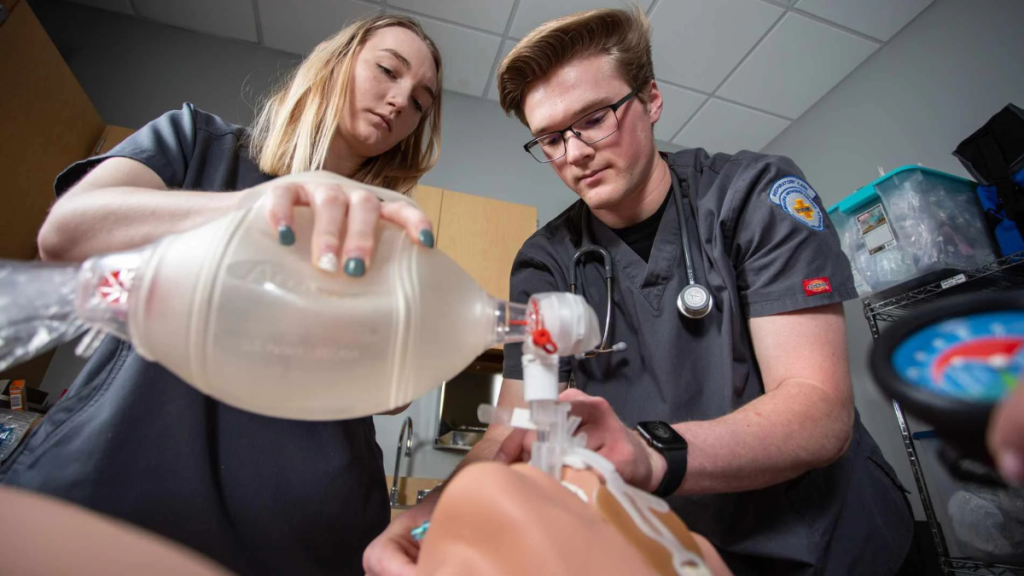Becoming a RRT is an admirable pursuit, combining the satisfaction of patient care with the intricacies of cardiopulmonary science. This career demands a unique set of skills and knowledge, suitable for those with an interest in the respiratory system and a passion for healthcare. The path toward achieving this professional status involves education, certification, and practical experience. If you’re embarking on this career journey, it’s crucial to understand each step thoroughly to ensure success. Below, we’ll explore the essential milestones necessary for aspiring practitioners to reach their goal of becoming an RRT.
Educational Pathways for Aspiring Respiratory Therapists
The educational journey to become a respiratory therapist traditionally begins with completing an associate degree in respiratory therapy. However, the trend is shifting towards more advanced education, and an RRT bachelor degree is becoming increasingly common among healthcare institutions as a preferred qualification. This degree provides a comprehensive foundation in respiratory care practices, patient assessment, and biomedical sciences.
During their studies, students cover subjects such as anatomy, physiology, pharmacology, and pulmonary rehabilitation. They learn how to interpret diagnostic tests, such as pulmonary function tests and blood gas analyses, which are crucial in evaluating and treating patients.
Educational programs for respiratory therapy must be accredited by the Commission on Accreditation for Respiratory Care (CoARC) to ensure that graduates are eligible for licensure and certification. Prospective students should verify the accreditation status of a program before enrollment to ensure it meets the industry standards.
Navigating the Certification Process for Respiratory Therapy

After completing the necessary educational requirements, graduates must obtain certification to practice as respiratory therapists. The National Board for Respiratory Care (NBRC) offers the Certified Respiratory Therapist (CRT) credential, which is a prerequisite to becoming an RRT. The CRT certification is generally seen as the entry-level standard in the field.
Once they have attained the CRT designation, respiratory therapists can opt to take the advanced RRT credentialing exam. The RRT certification demonstrates a higher level of expertise and often opens up more diverse and specialized career opportunities. It is essential to prepare thoroughly for these examinations, as they cover a broad range of topics within the respiratory therapy discipline.
The certification exams are rigorous, but with focused study and practical experience, candidates can pass them successfully. Many educational institutions provide resources and preparatory courses to support their students in this phase of their professional development.
Gaining Experience Through Clinical Rotations and Internships
Hands-on clinical experience is indispensable in the training of registered respiratory therapists. Clinical rotations and internships enable students to apply their knowledge and skills in real-world healthcare settings under the supervision of experienced professionals.
Through these experiences, students interact with patients of different ages and with various respiratory conditions. They learn to operate advanced therapeutic and monitoring equipment, all while developing the soft skills necessary to provide compassionate patient care.
Completing these clinical hours not only solidifies a student’s understanding of respiratory therapy but also fulfills part of the requirements for certification. Many programs work closely with local hospitals and healthcare facilities to ensure that students are exposed to various clinical environments.
Maintaining Certification and Pursuing Continued Education in Respiratory Therapy
After securing certification and beginning practice, RRTs must stay committed to continued learning and maintaining their credentials. The healthcare field is ever-evolving, with new technologies and treatments emerging regularly. To provide the best care, therapists must keep up with these advancements.
Maintaining certification often requires obtaining a certain amount of continuing education units (CEUs) within a re-credentialing period. RRTs can earn CEUs through workshops, seminars, and advanced courses. This commitment to ongoing education ensures that therapists remain knowledgeable and competent in their field.
Some respiratory therapists choose to specialize further by obtaining additional certifications in areas such as neonatal/pediatric specialty, sleep disorder testing, or pulmonary function technology. These specializations offer avenues for career advancement and highlight a therapist’s dedication to specific aspects of respiratory care.
Overall, the journey to becoming a registered respiratory therapist is demanding yet immensely rewarding. It requires dedication to studying, passing important certification exams, and gaining practical experience—all of which prepare therapists to make a positive impact on the health and well-being of their patients. With the dynamic nature of healthcare and respiratory therapy, the commitment to constant learning and improvement is both a responsibility and a privilege for those who don the RRT title.




